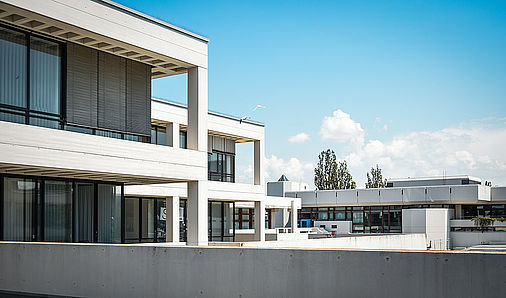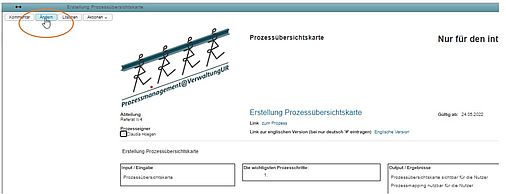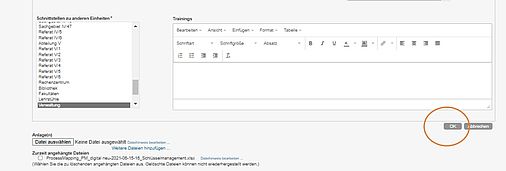
Process portal

Credit: Julia Dragan
WHY a process portal?
The process portal is a central repository where all processes mapped according to the so-called LEAN method (value stream mapping) are stored.
Why do processes need to be mapped at all?
Process mapping is one of the most powerful and effective lean methods for optimizing processes. The goal of process management is to make all processes run as smoothly as possible without any weak points.
Each process is described, visualized, analyzed and presented step by step. Subsequently, the process is redesigned using the so-called turtle method (who does what, by when, how, and who must be informed?). After that, a process is considered being mapped.
The process portal provides everyone invovled in certain processes access to detailed information. Processes published can be viewed by all university members.
This helps to ensure that it is clearly defined and transparent who does what and when. Along with that, processes are digitally accessible to all.
This supports the vision of the university administration:
Administration@UR - United.
Responsible for the future.
Human. Digital. Transparent.
Click here to log in to the Process portal.
Download training documents (only in German) -->
Process management roles
Who does what?
The different roles in process management
Process owners
Process owners are the persons responsible for a process (or sub-process). They need to know the framework conditions, specifications and guidelines for the process.
They
- issue the process release (also with regard to IT-tools),
- ensure result-oriented, strategic control of their process,
- consolidate its processes,
- select the process indicators and key figures, and
- initiate - if necessary - the digitalization of the process.
In order for process owners to perform their tasks with the goal of process optimization, they need the appropriate resources (labor, time, money) and the ability to make decisions. In the administrative context, they are therefore usually heads of department or unit.
Is a process not working or should it be improved? Then the process owners are the right people to contact.
Process coaches
Process coaches act on behalf of the process owners. They organize the ongoing improvement of the process together with the process participants. Their tasks include knowing the process well, constantly monitoring it and communicating it.
Process coaches are responsible for the operational execution of the process, for defining its requirements, for process design and documentation, and process integration. Process coaches may seek the assistance of external consultants in modeling the processes.
Like process owners, the process coaches require knowledge of the framework conditions, specifications and guidelines for the process.
They
- network and coordinate the process participants,
- organize a team for process optimization,
- take care of workshops and trainings on the process,
- continuously monitor and document the process (Key questions: Is there a difference between the target and actual process? Do the general conditions of the process change? Does the process achieve the agreed results - measured in agreed criteria/key figures?),
- communicate the process - not least uncoordinated deviations or problems - to the appropriate parties,
- initiate the further development of the process,
- independently contribute suggestions for improvement and their own observations in cooperation with the process owners, and
- take the digitalization factor into account in the process mapping in collaboration with the administrative IT department.
Process participants
They are part of the process teams in each individual process and are all the people who jointly develop or have developed the process. Process participants represent their respective section or process step or assume a specific function in the process. They are actively involved in the process flow and are responsible for the further development of the content of the processes. In the case of new or further development of processes, representatives of the departments involved in the process are members of the process team.
Process users
The group of people who apply or use a process.
Process management team
The process management team is a cross-functional group that advises on the introduction of process management in the administration of the University of Regensburg. It develops implementation proposals and recommendations for action.
Process Management Office
The Process Management Office implements process management at the UR, organizes the process management team as well as external consultations for process mappings.
Editing rights
To create a process map, you need editing righgts. The process team will provide them upon request.
For this purpose, please send an informal e-mail to organisationsentwicklung@ur.de
containing information about your department and unit. Furthermore, please let us know who is the process owner and who will be editing the process.
How to revise a process map
Call up your process map. Edit it with the button |Ändern|.

Make the changes and after editing save the process map with |OK|.

How to change the status of a process map
The workflow is stored in the details of the process map. 'Aktion' will allow you to change the status.

Press |OK| to confirm the change of status.
At what point the process map is visible for everyone?
If you activate the status with 'Offiziell', the process map can be read by everyone owing a RZ-Account of the University of Regensburg.
Do you need support?
If you have any further questions, please contact us at organisationsentwicklung@ur.de.
University Administration
contact
Martina Fischer
Sammelgebäude, Room 4.12
Phone +49 941 943-7411
E-Mail: martina.fischer@ur.de




